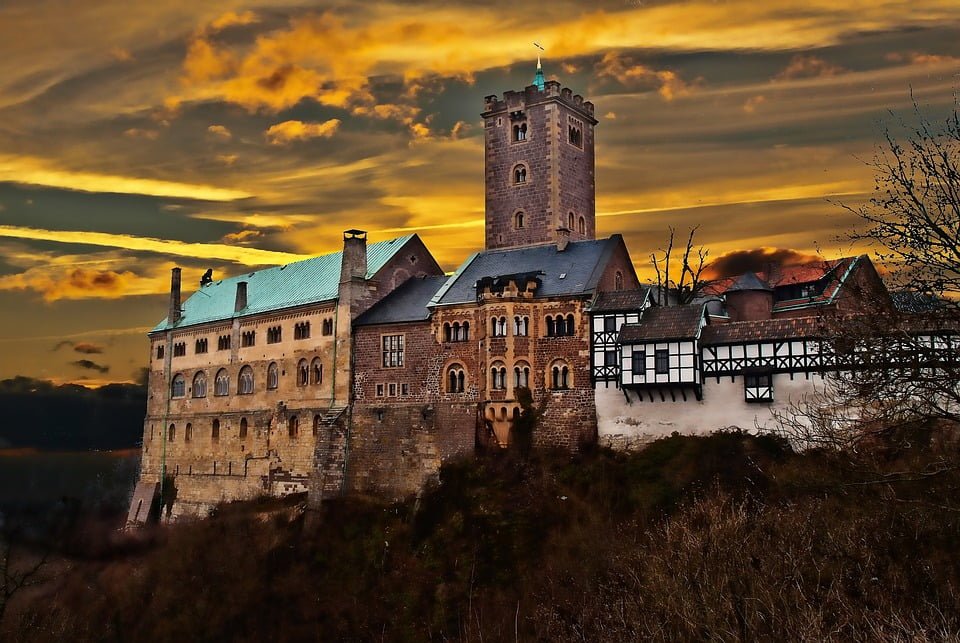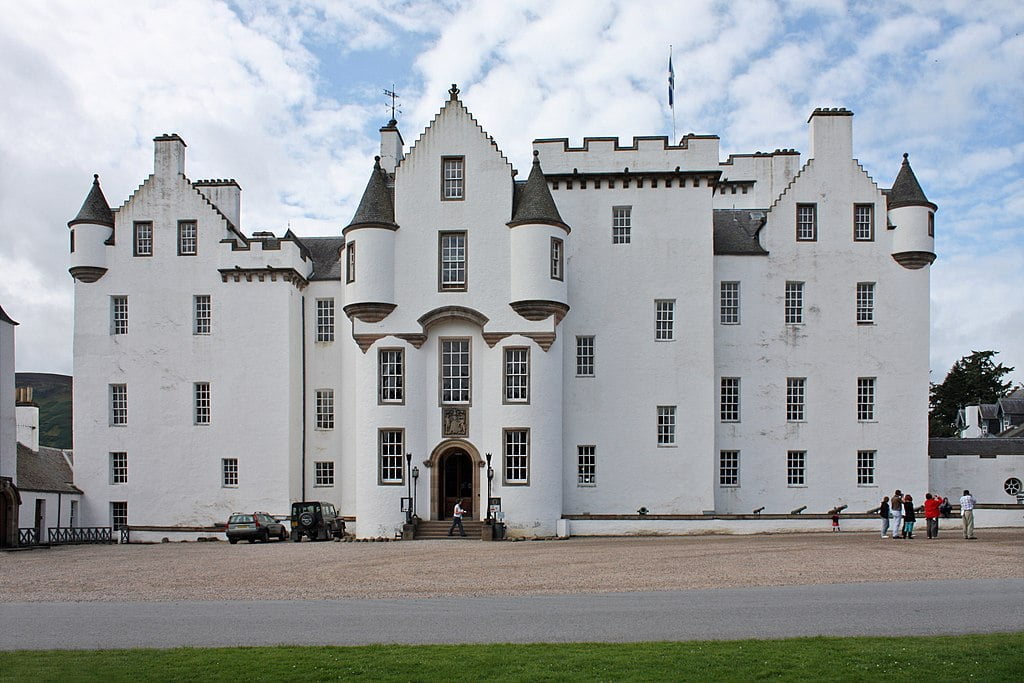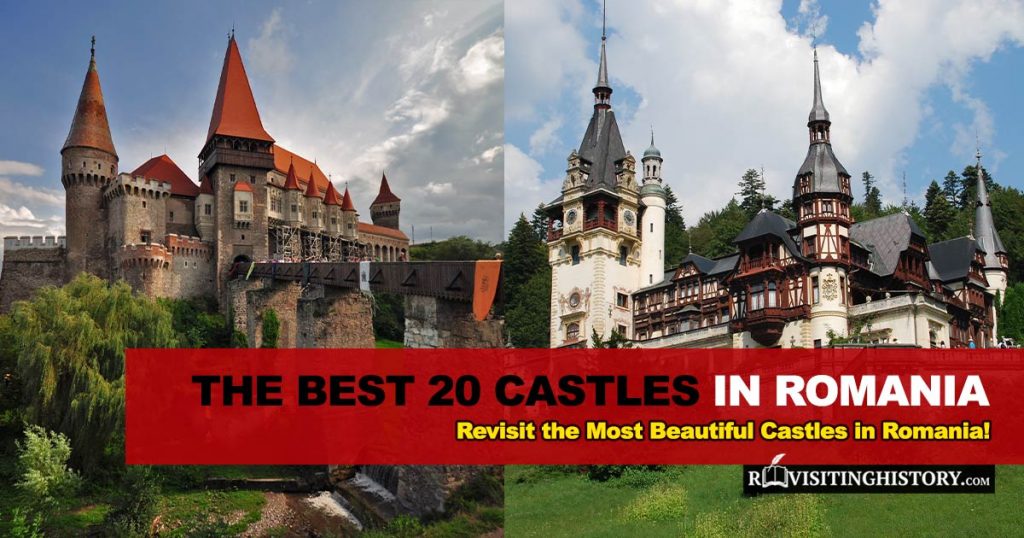Italy–fantastic and world-famous Italy! The country is listed as one of the top five most visited countries in the world and is famous for its history, art, culture, food, and just about everything you can think of! Italy is home to grand architecture from the great ancient Roman Empire’s Colosseum forward. Many Renaissance artists still acclaimed today, such as Leonardo Da Vinci and Michelangelo were Italian. The country has the most UNESCO World Heritage Sites in the world, an outstanding achievement!
We have compiled a list of twenty fabulous historical landmarks to visit in Italy, just to whet your appetite in anticipation of a first or return trip to experience some of what the country has to offer.
Table of Contents
10 Most Popular Castles to Visit in Italy
The order of the list is based on Google search volume of each castle = popularity.
1. Civita di Bagnoregio
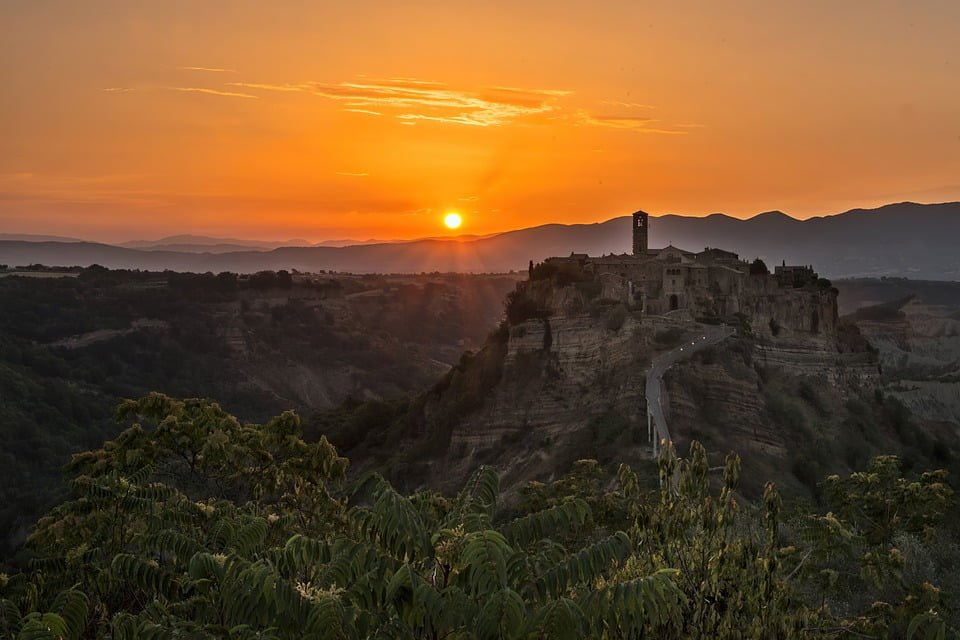
Gloriously located atop a hill in the heart of Italy, Civita di Bagnoregio has developed through the ages into a community. Interestingly, the town is also known as the ‘dying city’ due to the fact that its base is continuously corroding–entry to this village is only possible by way of a drawbridge.
Etruscans laid down roots at the site more than 2,500 years ago. Excavations have uncovered that, while in ancient times five passage gates into Civita existed, only one entry gate continued through to Medieval and Renaissance structures, remaining in the present day.
The city houses many accommodations for tourists, there is a museum as well as the Bishop’s Palace and numerous buildings from the Middle Ages open to visitors. The town has also been featured as the backdrop in several movies, including ‘My Big Gay Italian Wedding’.
- Location: Viterbo Province
- Time built: 1st Century through the Renaissance
- Architectural style: Medieval & Renaissance
- Touring: Allowed. Visit the official website for more information.
2. Castel del Monte
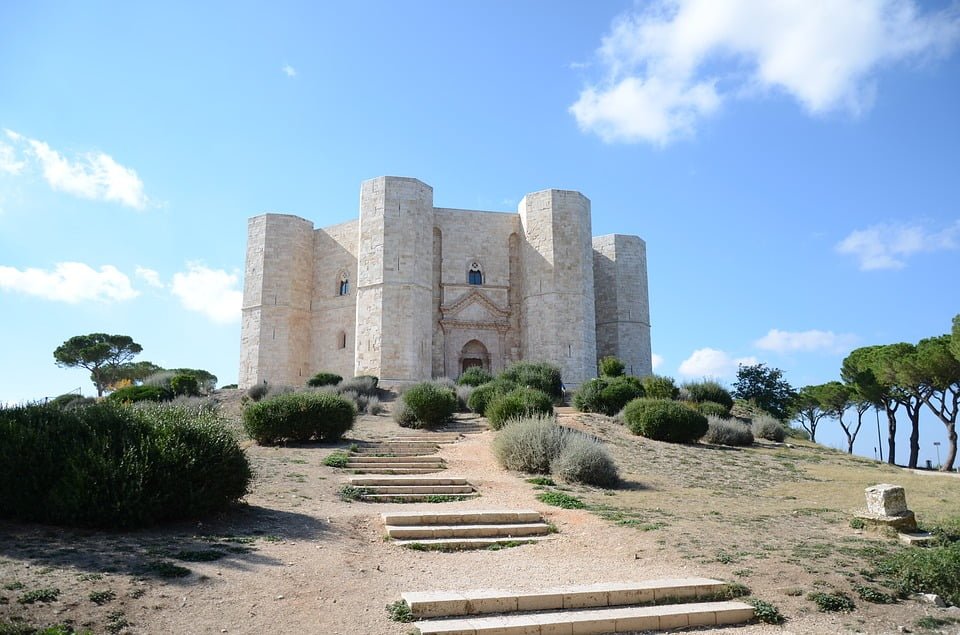
Picturesquely scenic and magnificent to explore, Castel del Monte was erected during the 1240s on a hill in the southeastern Apulia part of Italy. Designed in the Renaissance and Middle Ages architectural styles, Castel del Monte was commissioned by King Frederick II during his reign. Excavations have traced the earliest inhabitants in the area to the century prior to Frederick, around the 11th century BCE.
The citadel’s layout is renowned today for its octagonal shape and is a UNESCO World Heritage Site. The Italian version of the one-cent Euro coin displays this site! The castle is also known for being the backdrop in several scenes of the renowned film ‘The American,” featuring George Clooney as the lead actor. While the castle is open to tourism year round, don’t miss The Night of the Witches in mid-August–the event attracts thousands of visitors each year.
- Location: Castel del Monte
- Time built: 13th century
- Architectural style: Medieval
- Touring: Allowed. Visit the official website for more information.
3. Aragonese Castle
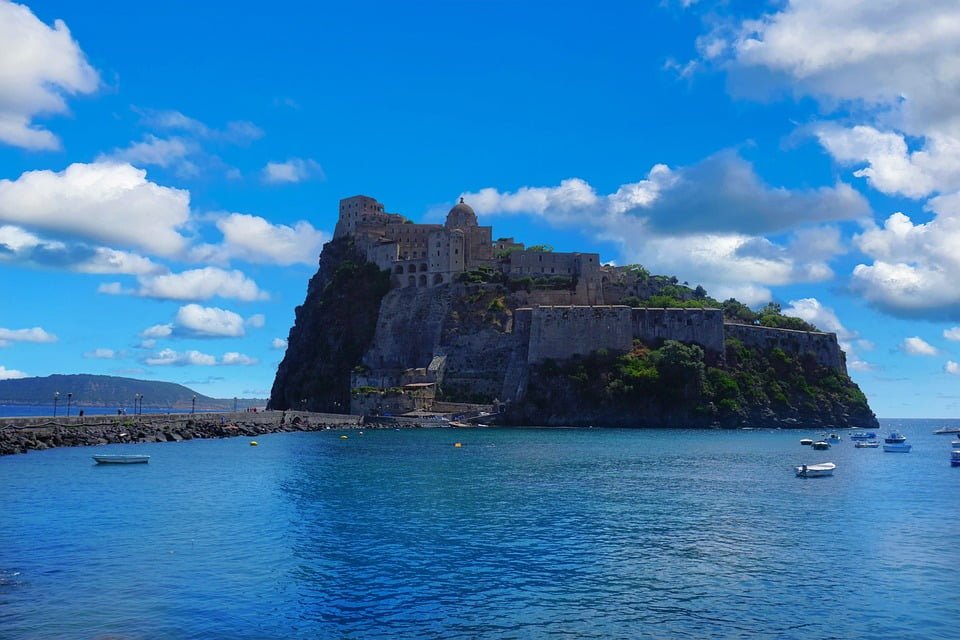
Proudly standing atop an islet formed from volcanic stone, Aragonese Castle is a medieval site in the Gulf of Naples. The magnificent historical site is only accessible by foot, across a rock-based walkway from the main island of Ischia.
Dating back to 474 BCE, the castle was commissioned as a defense fortress by Hiero I of Syracuse. Further construction work was completed at the site during the 15th century by Alfonso V of Aragon. This additional work included further fortification of the structural walls to provide additional security for the resident population. The castle has been privately owned since 1912.
Today, the castle is open to the public and is arguably the island’s most visited landmark with a vast historical heritage. The castle was also featured in the 2019 movie ‘Men in Black International’ as the character Riza’s fortification.
- Location: Ischia, Gulf of Naples
- Time built: 474 BCE
- Architectural style: Medieval
- Touring: Allowed. Visit the official website for more information.
4. Sforza Castle
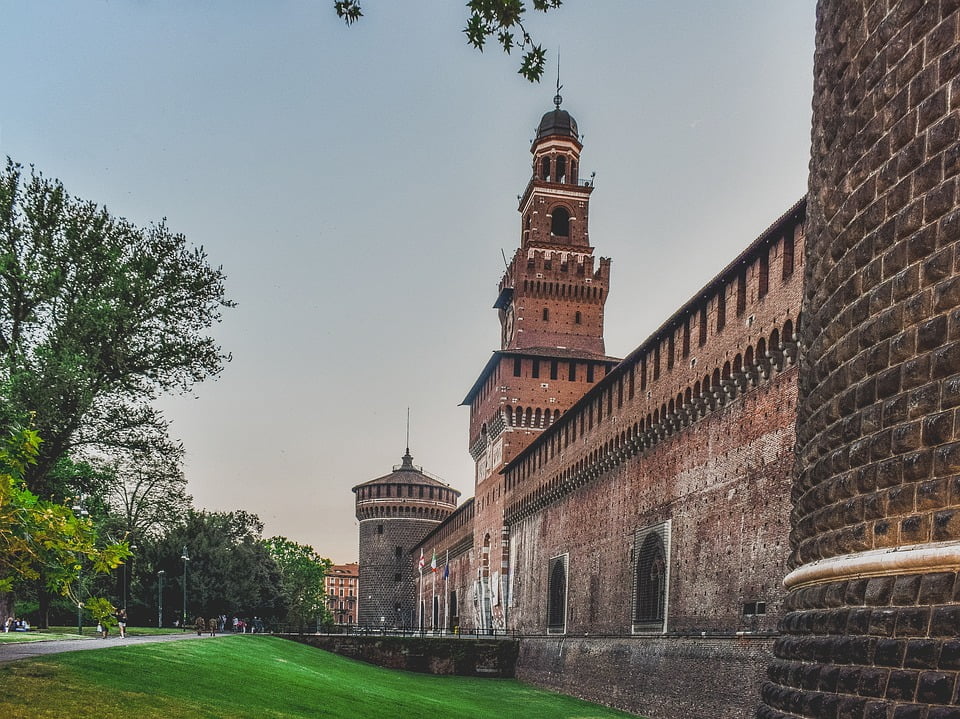
Located in the city of Milan, Castello Sforzesco is a 15th-century medieval castle commissioned by Duke Francesco Sforza to be built over the foundations of a prior fortress. The site was extensively expanded and became one of the largest fortifications in Europe by the 17th century. Several renowned artists, including Leonardo Da Vinci, were tasked with decorating the castle’s interior with paintings on the walls and ceilings. The site was renovated a few times during its existence, with noteworthy reconstruction work being completed between 1891 – 1905, under the instruction of Luca Beltrami.
In the present day, the castle site is occupied by several museums and is a frequently visited tourist destination. Featured exhibitions in the museums include priceless artworks. One museum is also named after and displays the last sculpture by legendary artist Michelangelo, the Rondanini Pieta.
- Location: Milan
- Time built: 15th Century
- Architectural style: Renovated 15th Century Fortification
- Touring: Allowed. Visit the official website for more information.
5. Castelvecchio
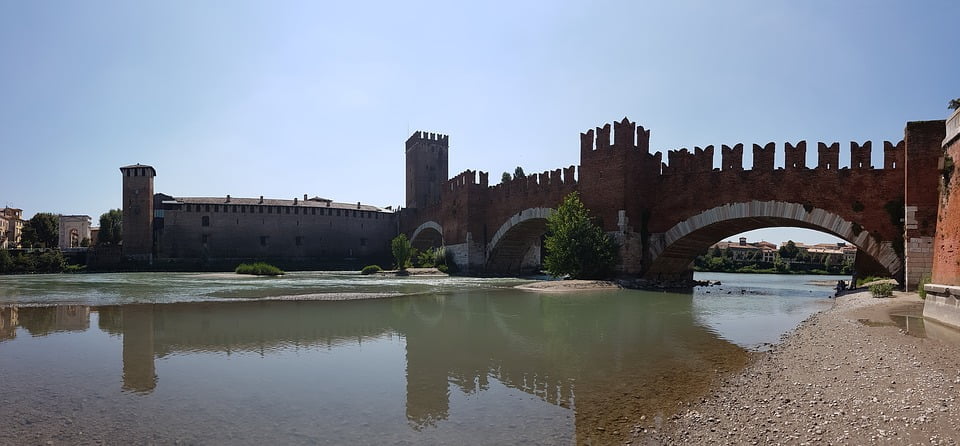
Castelvecchio is one of the most important castles of the Scaliger Dynasty, Veronian rulers during the Middle Ages. This magnificent structure overlooks a fortified bridge, intended as a deterrent to the neighboring Sforzas of Milan and the Gonzaga family of Venice. The fortified bridge was also the planned escape route of the signiors in the event of a rebellion.
During the Napoleonic Wars, the castle was damaged beyond repair when rumors spread that Napoleon himself intended to stay at the castle. From 1923 until the end of World War II, the castle was used as a troop barracks and then restored during 1963. Castelvecchio today is an impressive structure but little remains of period decorations or artifacts. The seven towers, an elevated keep, and four central buildings still stand for tourists to visit.
- Location: Verona, Italy
- Time built: 14th century
- Architectural style: Medieval
- Touring: Allowed. Visit the official website for more information.
Revisit More Historic Places Below or Read Further
6. Miramare Castle
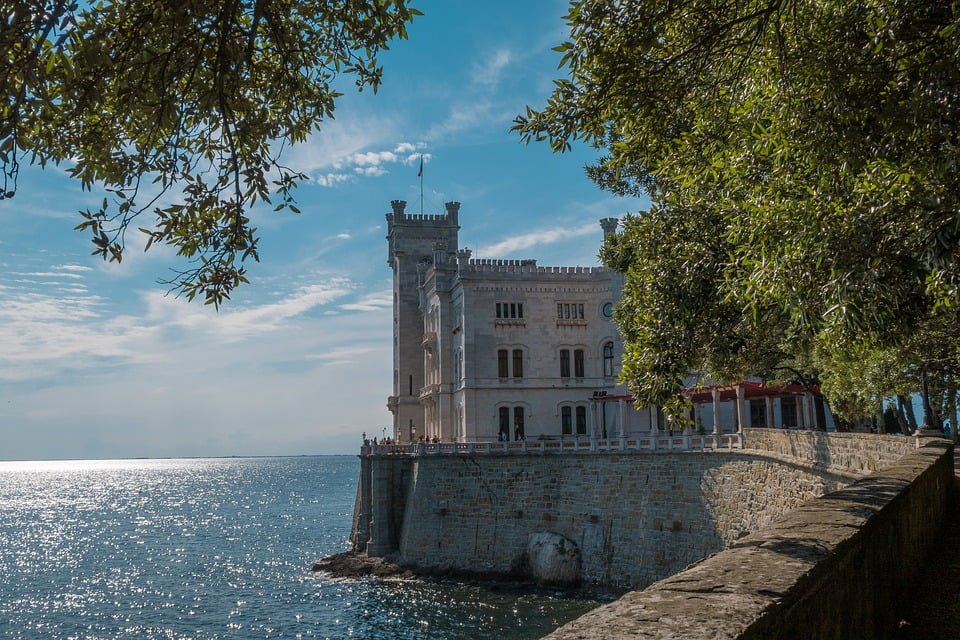
Miramare Castle is a majestic estate overlooking the Gulf of Trieste. The blueprints of the castle compound were crafted by renowned Austrian architect Carl Junker, and the glorious estate was commissioned by Austrian Archduke Ferdinand Maximilian and built in just four years from 1856–to 1860. The castle estate covers a vast area of incredible gardens first conceived by the archduke, later remodeled to encompass a wide range of plants and trees. The grounds also include stables and ocean access.
In the present day, the castle estate is open to the public. A visit to the castle grounds features breathtaking views. The castle building houses a museum and tours provide information about the castle’s construction and history as well as gorgeous displays of the original accessories and décor from the mid-19th century.
- Location: Trieste
- Time built: 19th Century
- Architectural style: Tuscan
- Touring: Allowed. Visit the official website for more information.
7. Castello Banfi
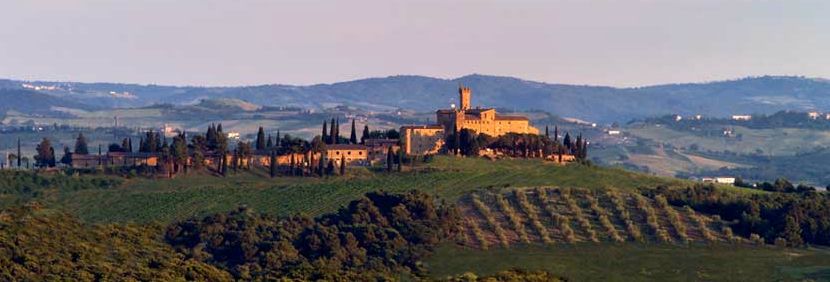
Situated on a hill at the point where two rivers converge in the Montalcino region of the country, Castello Banfi is an ancient castle featuring fabulous scenery. Believed to have been erected in the first part of the 15th century with further construction at the site in the 17th century, the castle site is a gorgeous display of the Tuscan architectural style.
Today, the castle site belongs to the Banfi Spa and is a thriving wine estate. The winery is open to the public and offers visitors an exceptional experience blending history, culture, and relaxation. Tourists are able to stay at the gorgeously furnished hotel housed within the castle, with two reputable restaurants at the estate offering visitors the best of Tuscan cuisine. The highlight of a trip to the estate includes tastings of an assortment of fine wines cultivated and produced at the site’s winery.
- Location: Banfi
- Time built: 15th century
- Architectural style: Tuscan
- Touring: Allowed. Visit the official website for more information
8. Castle Nuovo
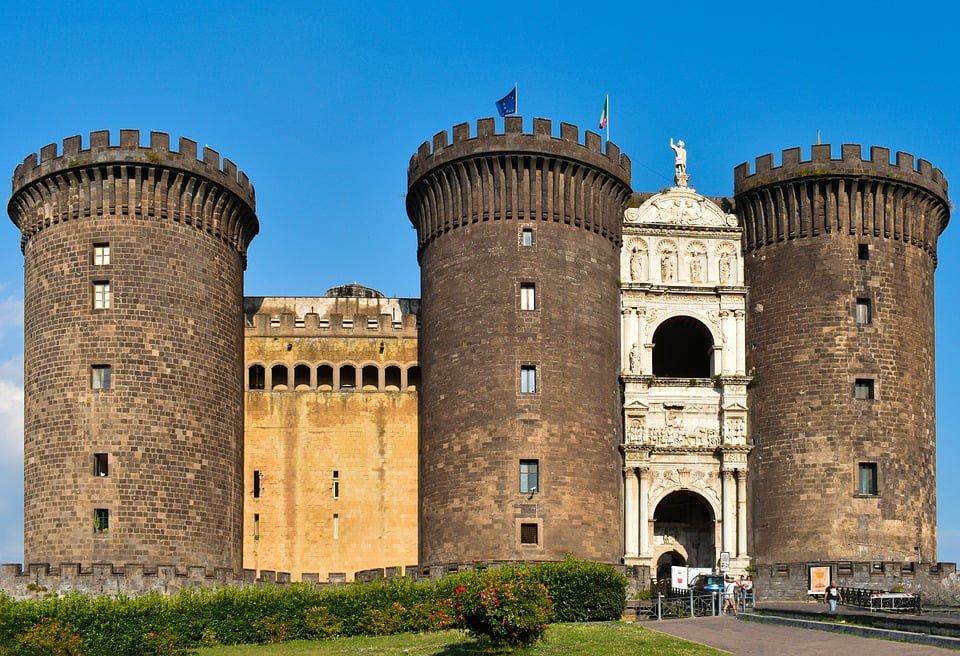
In the heart of Naples, you will find the medieval Castle Nuovo site. The castle stands dominant, opposite the Piazza Municipio and the Palazzo San Giacomo, showcasing glorious views. The castle boasts a captivating history spanning several centuries since it was first constructed in the latter part of the 13th century.
Until 1815, the castle served as the headquarters for the royalty of the nations of Aragon and Naples, as well as Spain. There are stories of overthrowing the Roman Church being planned at this castle and haunting legends that make this trapezoidal castle in the center of Medieval Naples an engaging site to explore. The castle site is open to the public in the present day.
- Location: Heart of Naples
- Time built: 13th Century
- Architectural style: Medieval with Italianate additions
- Touring: Allowed. Visit the official website for more information.
9. Castel dell’Ovo (Egg Castle)
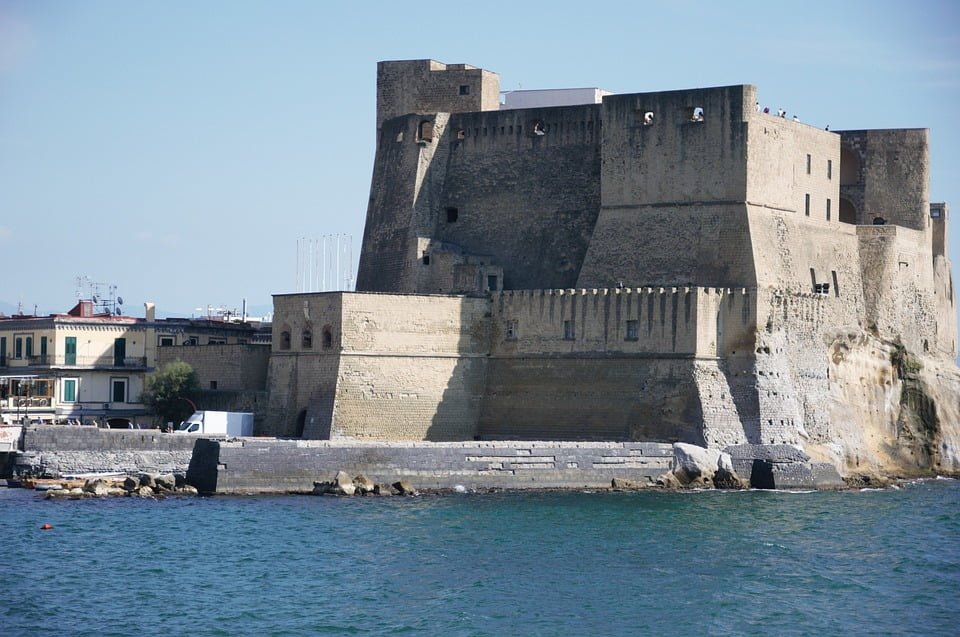
This imposing fortress also referred to as Maschio Angiono (Angevin Keep), is located next to the port of Naples. Named Castle Nuevo to distinguish it from the city’s older fortresses, it was originally commissioned by King Charles I of Anjou. After the French conquered Spain in the mid-15th century, the castle was renamed Castle Nuovo and completely remodeled according to the Renaissance-style tastes of Alfonso V of Aragon.
Even from a distance, this magnificent fort looks imposingly fit for royalty. The five-round towers are joined by impenetrable walls, while the main entrance–an intricately carved archway–is squeezed between two watchtowers. Inside are magnificent frescoes, an armory hall, and underneath a glass floor, you can see remnants of Roman ruins. Upstairs is a magnificent collection of artwork by Neopolitan painters from the 17th to 20th centuries.
- Location: Naples
- Time built: 13th Century
- Architectural style: Renaissance
- Touring: Allowed. Visit the official website for more information.
10. Scaligero Castle
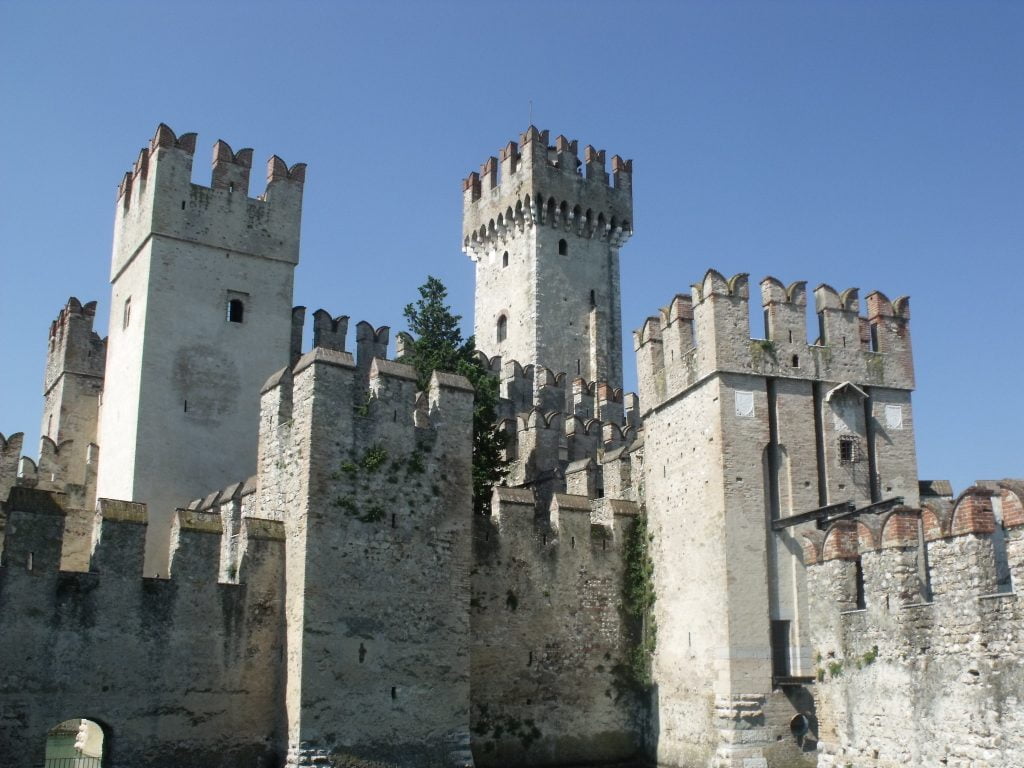
This enchanted castle located on a peninsula was given its name by the Scalogero family who ruled Verona for over 125 years. Leonardo Della Scala commissioned the castle, built on previous Roman fortifications, in the 13th century. The new castle had a magnificent courtyard, with four towers used to scout for invaders.
The legend of Ebengardo and Arice is a magical love story told about this castle. Ebengardo and Arice lived happily in their castle until a ferocious storm brought a stranger to their door asking for shelter. They allowed Knight Elalberto to spend the night there.
In awe of Arice’s beauty, he snuck into her room, where Arice stabbed him in self-defense. Ebengardo ran to Arice’s room, but it was too late: Ebengardo killed the knight but couldn’t save Arice. Legends say the ghost of Ebengardo still searches the castle for Arice on stormy nights.
- Location: Above Lake Garda
- Time built: 13th century
- Architectural style: Tuscan
- Touring: Allowed. Visit the official website for more information.
Planning to Visit Nearby Countries? Check Out These Best Castles Lists:
10 Less Popular Castles Worth Visiting While In Italy
If you are a castle enthusiast, you must take out the time to visit these equally spectacular castles in Italy as well:
11. Rocca Calascio
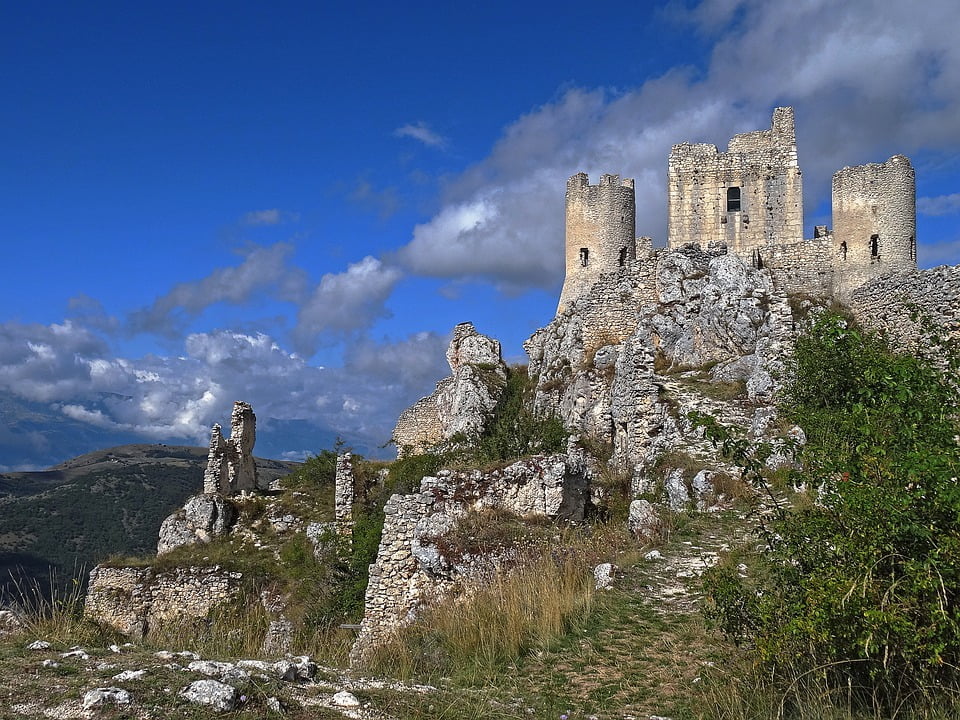
The magnificent ruins of Rocca Calascio hint of the great castle that once stood 4790 feet above sea level, as the highest fortress in the Apennine Mountains.
In the 10th century, the original structure was built: a single watchtower. As the centuries passed, it was gradually built up to include four towers connected by curtain walls, enclosing a single interior courtyard. The Medicis took ownership of the castle as they wanted control of the Abruzzo Mountains and the passes, the main trade routes for wool and cloth going to Florence.
- Location: Calascio, Italy
- Time built: 10th Century
- Architectural style: Medieval
- Touring: Allowed. Visit the official website for more information.
12. Brown Castle
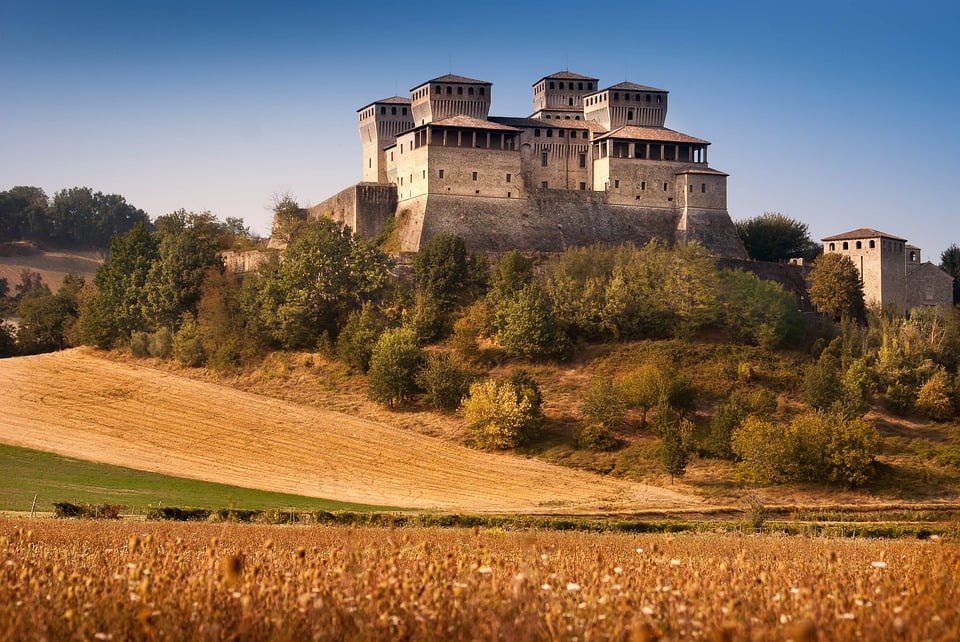
This fortress overlooks one of the most beautiful seaside resorts in Italy, Liguria in the village of Portofino. The area is often referred to as the Italian Riviera and competes with the French Riviera.
The elevated castle positions it perfectly as a coastal defense structure. Built in the 15th century, it was constructed to house multiple cannons and keep invaders at bay. This fortress fought off many conquering armies, including an English attack during the Napoleons Ligurian Republic in 1798, when only the smallest tower was destroyed.
- Location: Portofino, Genova
- Time built: 15th century
- Architectural style: Medieval
- Touring: Allowed. Visit the official website for more information.
13. Buonconsiglio Castle
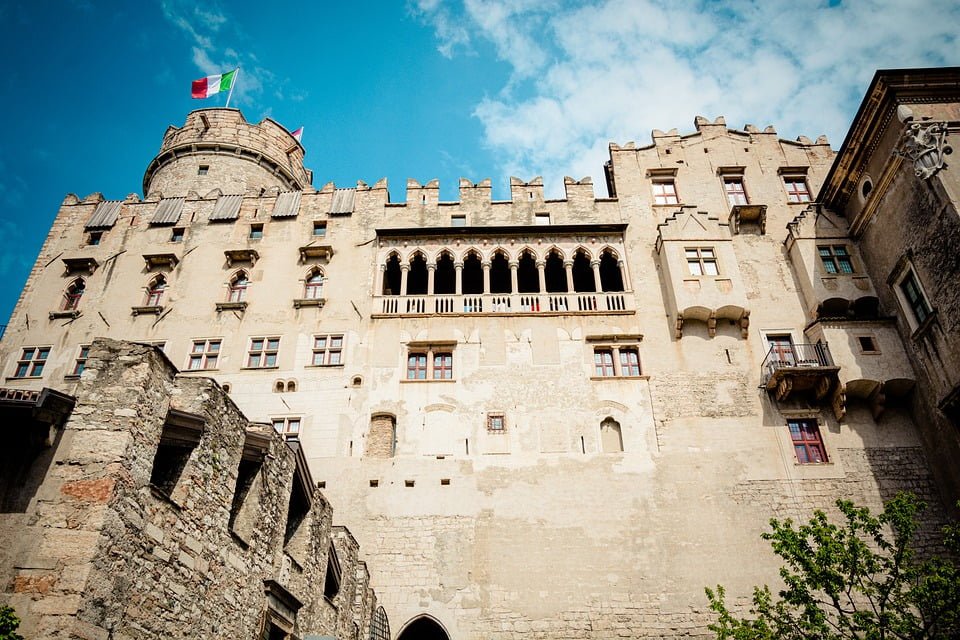
A majestic castle stands on a rocky hill looking into the heart of the town of Trento. The castle dates back to the 13th century when the castle served the Bishops of Trento until they were overthrown by the secular principality in 1802. This marvel of architecture includes buildings from different eras, including Venetian Gothic to Italinate, surrounded by a massive 16th-century wall. Bishop Berhard Clues built the Mago Palazza which dates back to the Renaissance era. The castle is now a museum housing fabulous art collections, including valuable Baroque and Gothic frescoes.
- Location: Trento, Italy
- Time built: 13th Century
- Architectural style: Renaissance
- Touring: Allowed. Visit the official website for more information.
14. Este Castle
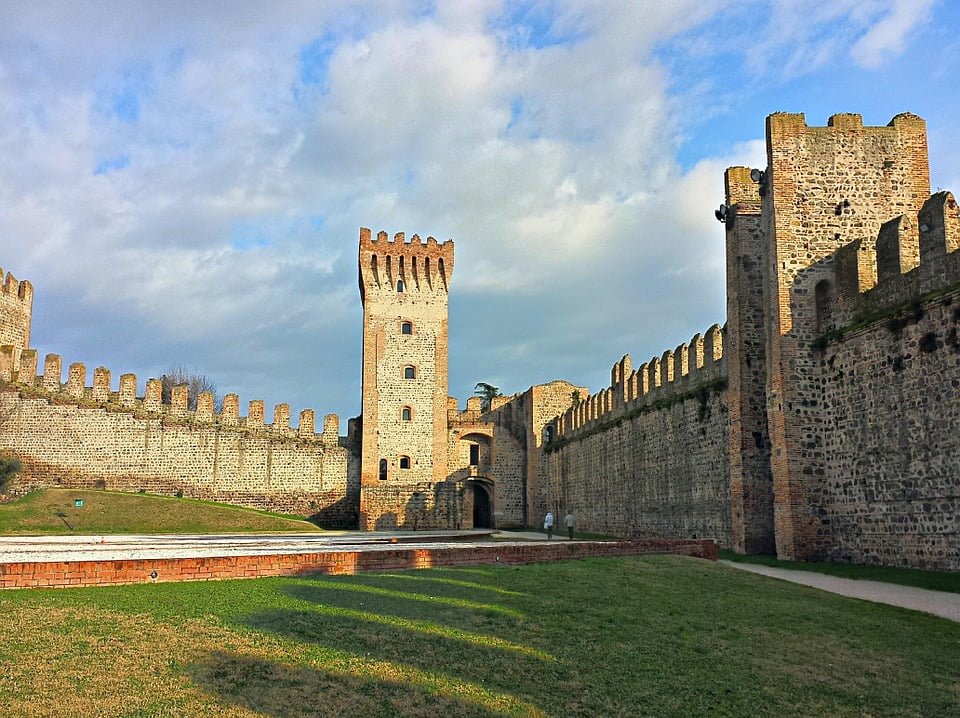
Este was originally occupied by the Romans, before being conquered and deserted by barbarians in the 6th century. While there was a Medieval structure destroyed in war during the 13th century, it is assumed that the current structure was reconstructed in the 14th century. It was eventually abandoned for centuries until a noble family from the Este Region acquired it from the municipality in 1887. Today the public gardens and archaeological museum at Este Castle are open to the public.
- Location: Padova, Italy
- Time built: 10th Century
- Architectural style: Medieval
- Touring: Allowed. Visit the official website for more information.
15. Fortezza di Sarzanello
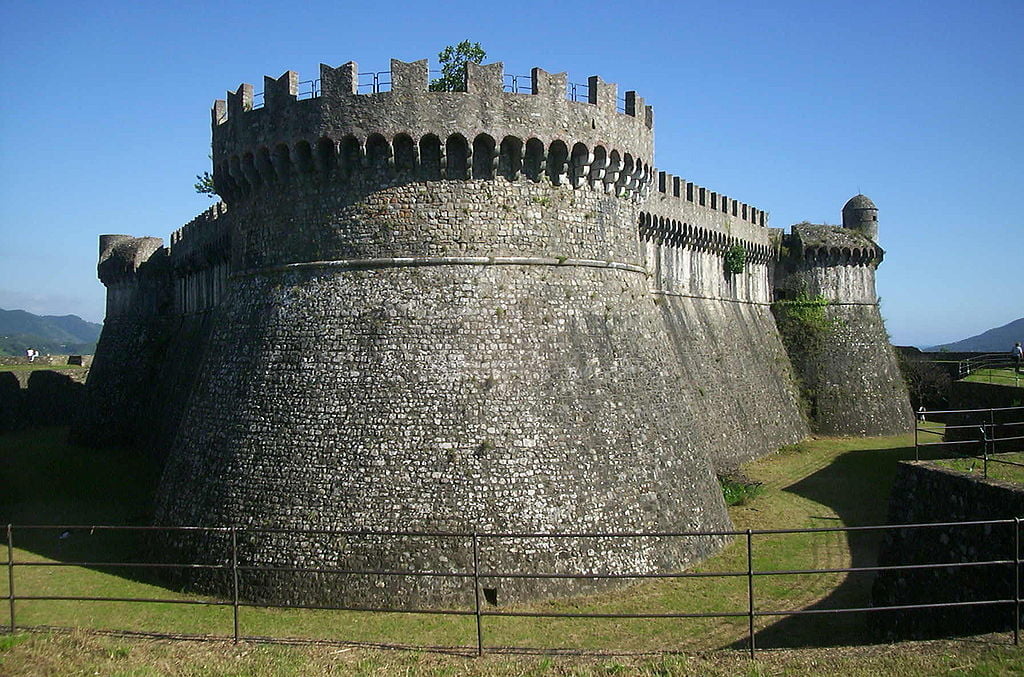
This imposing fortress, built in 963 AD, was granted to the Bishop of Luni by Emperor Otto I. Villagers originally built their houses around the fort for protection from foreign invaders, but all was destroyed during the Austrian War of Succession. Only the massive stronghold could withstand the constant bombardment and still stands to this day. Charles VIII took possession of the castle in 1494 and reconstructed the castle to its current shape: a large triangle with circular towers and curtain walls. The actual castle we see today is part of the reconstruction done in 1502.
- Location: Sarzana, Italy
- Time built: 963 AD
- Architectural style: Medieval
- Touring: Allowed. Visit the official website for more information.
Revisit More Historic Places Below or Read Further
16. Sigmundskron Castle
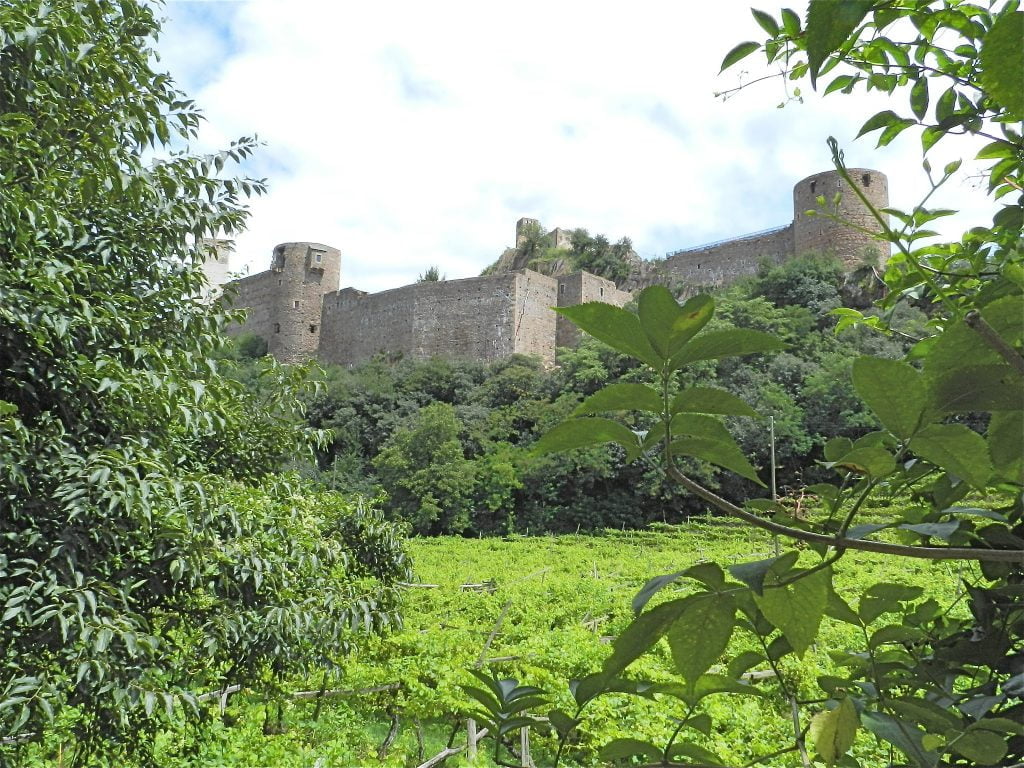
This vast castle was built as a set of fortifications near Balzano, Tyrol. After serving as a Bishop’s Palace from the 12th century, the castle passed into private ownership. In 1473, the prince of Tyrol, Duke Sigismund, bought the castle and renamed it Sigmundskron Castle. Although he completed many renovations and fortifications, Sigismund eventually ran out of funds. The castle then fell into a state of disrepair. Eventually, in 1974, the castle was partially restored for use as an inn and restaurant, before becoming the possession of the Province of Bolzano. Nowadays, it functions as a museum.
- Location: Balzano
- Time built: 934 AD
- Architectural style: Medieval
- Touring: Allowed. Visit the official website for more information.
17. Malaspina Castle
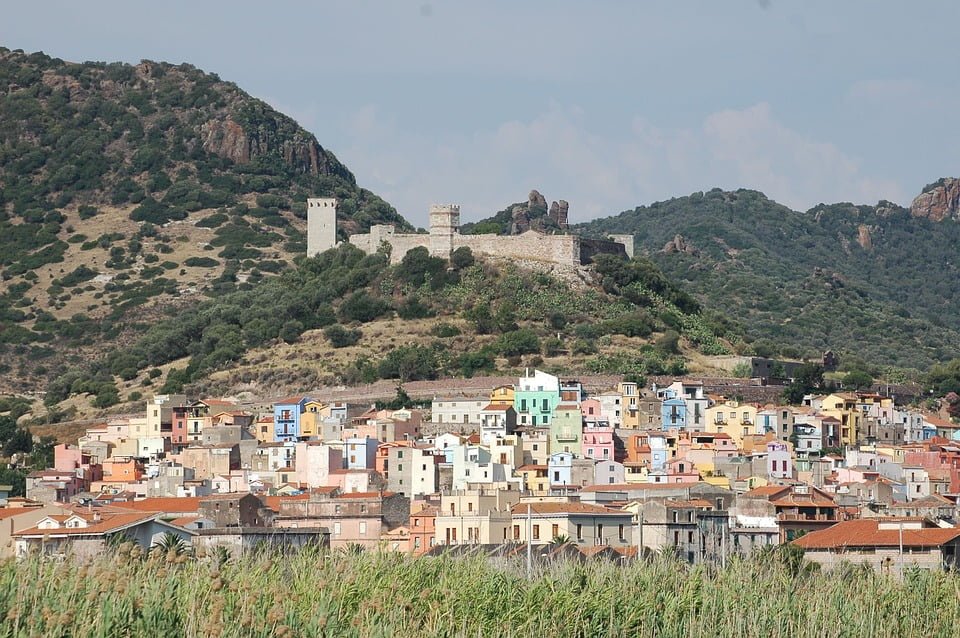
Malaspina Castle overlooks the town of Bobbio, while above the castle, a primitive Ligurian-Celtic Roman site overlooks both castle and town. The castle was built in 1304 by Corradino Malaspina, who placed the region and castle under the protection of the Viscontis. In 1545, the castle was transformed into a luxury palace. During the next four centuries, various noble families purchased the castle and lived there for short periods of time. In 1956, the municipality took possession of the ruins. It has since been partially rebuilt and is open to visitors.
- Location: Massa, Tuscany
- Time built: 1304
- Architectural style: Medieval
- Touring: Allowed. Visit the official website for more information.
18. Rocca Maggiore
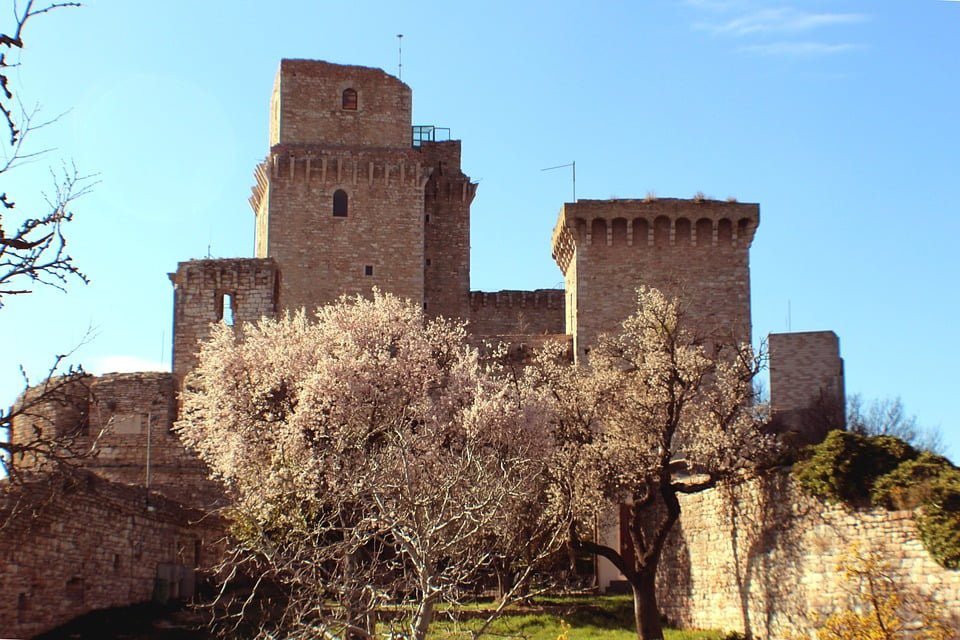
Rocca Maggiore is assumed to be built over 1000 years ago, during the era when barbarians invaded the surrounding area. During the 13th century, the fortress was destroyed in a riot, to prevent the papal governor at the time from occupying the fortress. Cardinal Gil de Albornoz conquered the fortress and rebuilt it in 1365. During the centuries that followed the fortress was enlarged and occupied by a variety of people from different regions. It remains an imposing fortress to this day, from the fortress you can see panoramic views of the surrounding Perugia and Spoleto valleys.
- Location: Assisi, Italy
- Time built: 1st century
- Architectural style: Medieval
- Touring: Allowed. Visit the official website for more information.
19. Castello Ursino
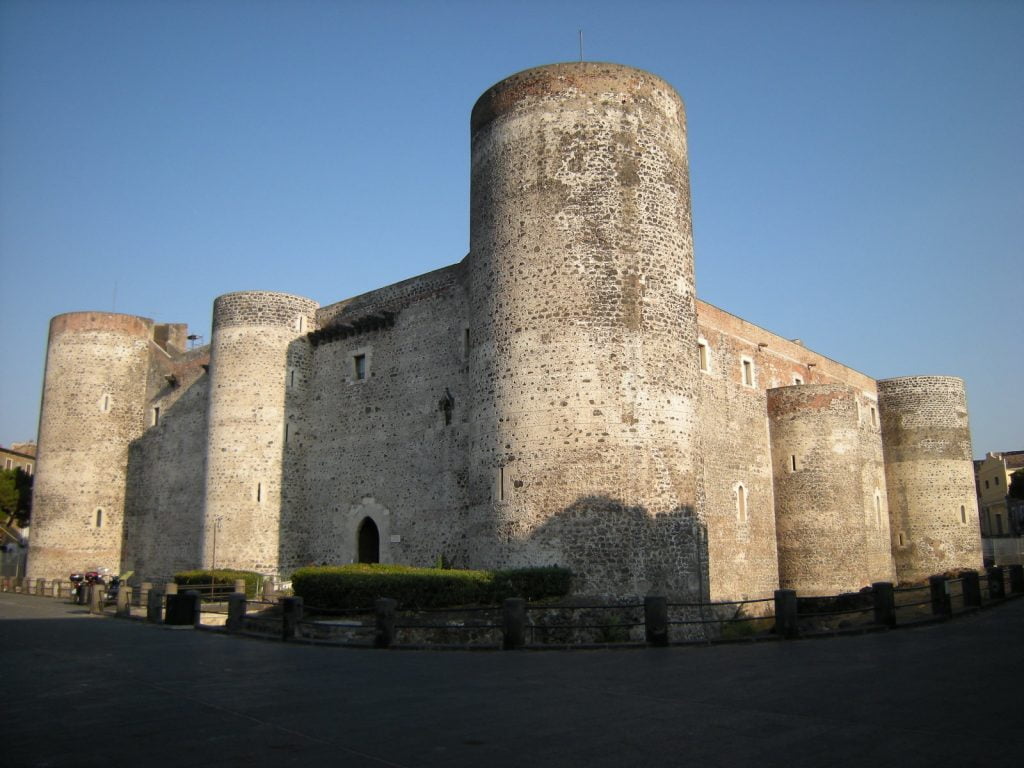
Ursino Castle became the symbol of Catania and a royal residence of King Fredrick II, King of Sicily. The majestic castle originally stood on a rocky outcrop overlooking the sea, but after the earthquake in 1600 it is now quite a distance from the sea.
After the decline of Sicily, it became the residence of the Spanish Aragon dynasty and continued to decline thereafter. The castle became a prison from 1434 until 1838, it was then turned into a museum and is used as a venue for exhibitions and presentations to this day.
- Location: Catania
- Time built: 13th century
- Architectural style: Medieval
- Touring: Allowed. Visit the official website for more information.
20. Castello Svevo
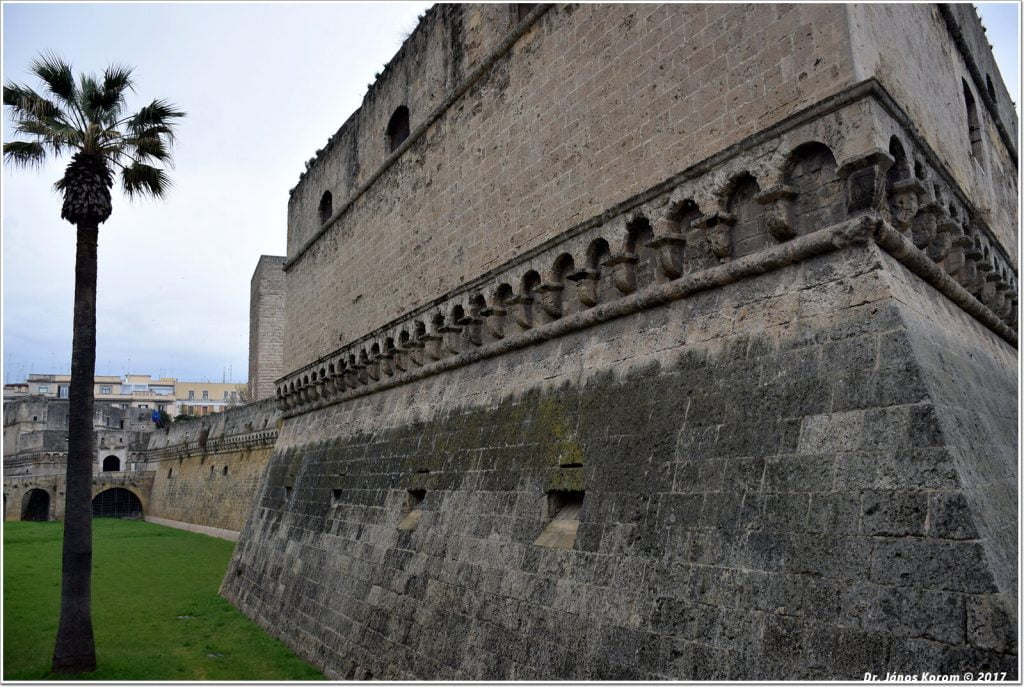
The original fortification was designed and commissioned by Roger III “The Norman” as a massive stone castle with two majestic towers protected by armored guards. Fredrick II built over the original castle and added bastions in the 16th century while the area was under Spanish rule.
Admire the different architectural styles that form the remaining castle today. View the museums and exhibits which include a rare collection of black & white photographs. Inside the museum, there are replicas of famous treasures found in Barri Vecchia, a must-see for treasure hunters.
- Location: Bari – Piazza Federico I Svevia 4
- Time built: 1132
- Architectural style: Medieval
- Touring: Allowed. Visit the official website for more information.
Planning to Explore Europe? Check Out These Best Castles Lists:
Conclusion
Italian castles conjure up vivid imagery from the doomed love of Romeo and Juliet to the power struggles of the powerful Medici family–more power than royalty and yet never successfully crowned. But a trip to Italy includes so much more than that: beautiful sunsets overlooking vineyards, sipping on local wine; delectable cuisine exclusive to the various “provincias”; beautiful buildings and statues … all just waiting for you to explore them. What area of Italy are you most interested in experiencing?


